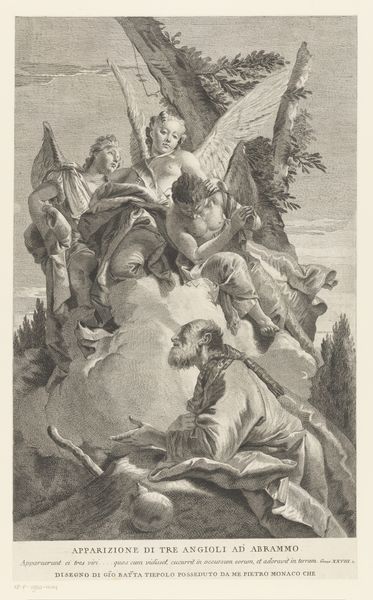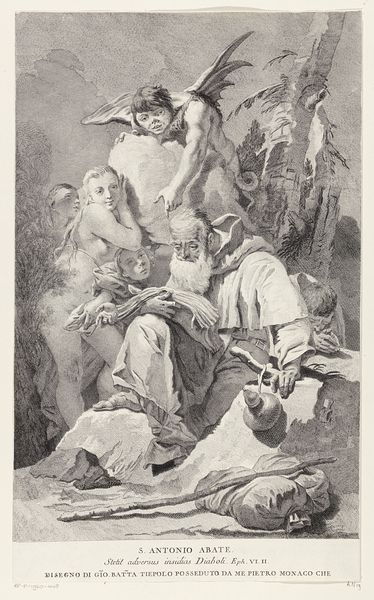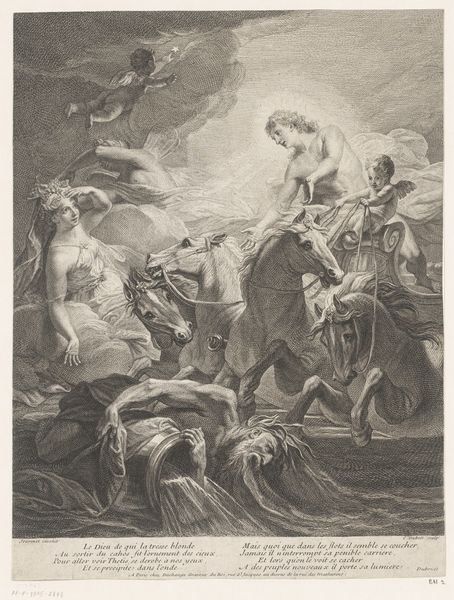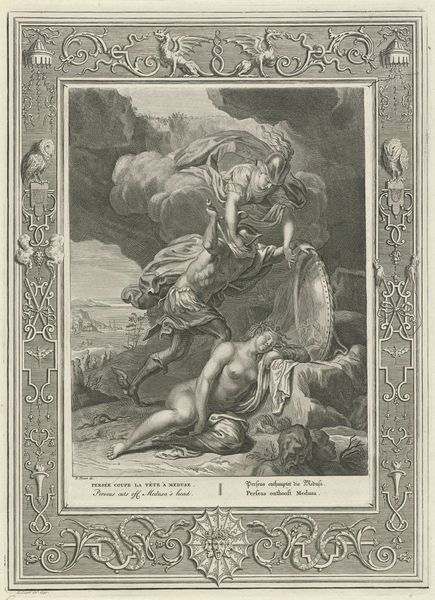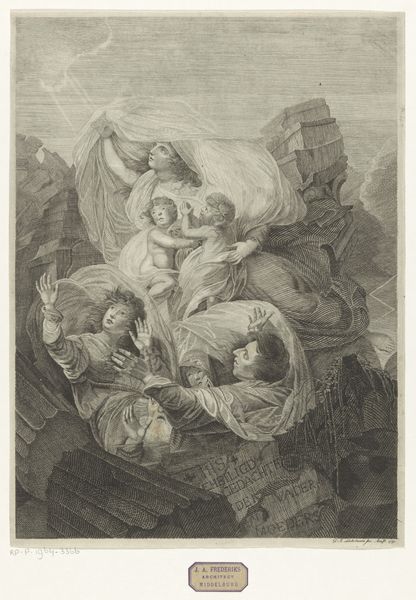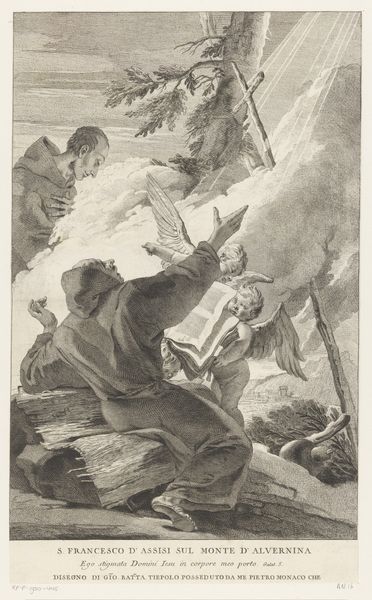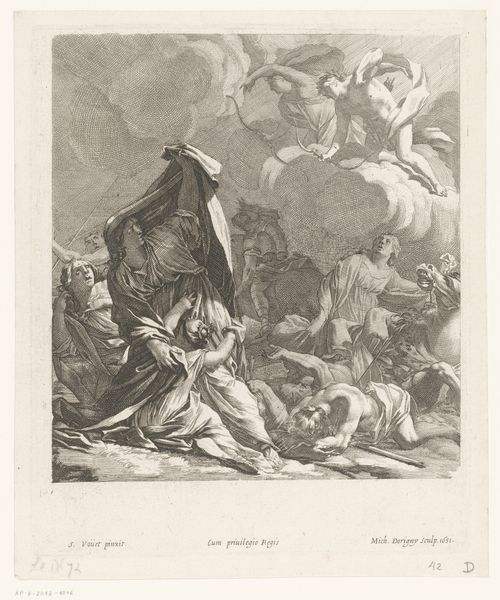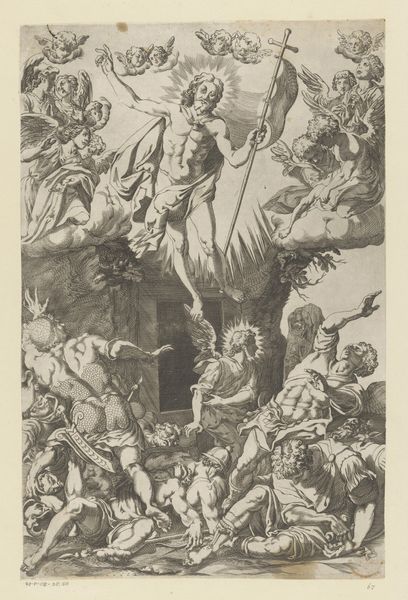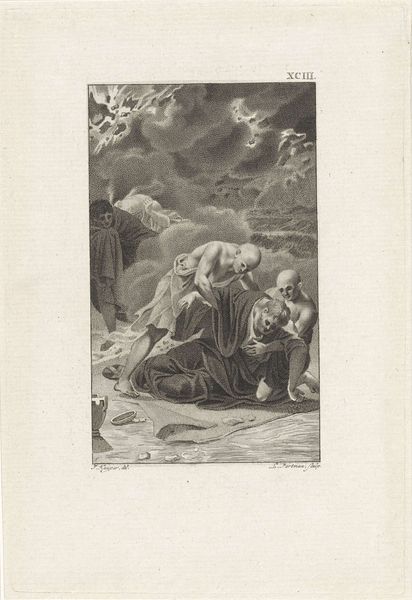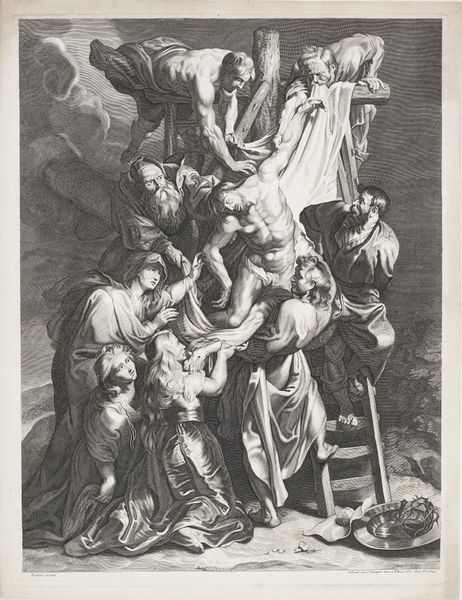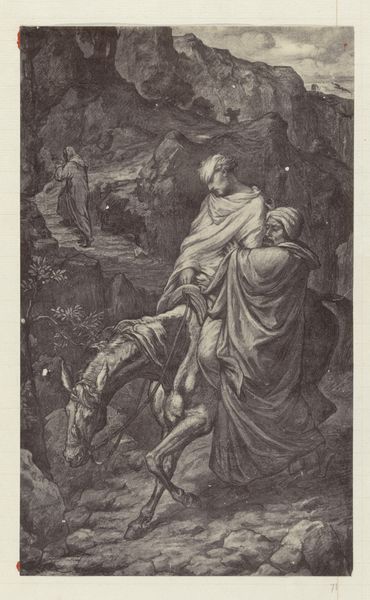
print, intaglio, engraving
#
baroque
# print
#
intaglio
#
figuration
#
line
#
history-painting
#
engraving
Dimensions: height 452 mm, width 276 mm
Copyright: Rijks Museum: Open Domain
Curator: Ah, here we are standing before Pietro Monaco’s “De heilige Hieronymus met twee engelen,” an engraving created sometime between 1717 and 1763. Editor: The image is strikingly ethereal, isn’t it? The wispy lines almost dissolve into a haze, softening what I imagine would otherwise be quite a severe religious scene. Curator: The image speaks to the distribution networks and collaborations that sustained printmaking workshops. Monaco declares underneath the image of Saint Jerome that his representation descends from a painting “possessed” or “owned” by the famous artist, Tiepolo. Consider how this kind of reproductive labor created new markets. Editor: I hadn’t thought of the socio-economic aspects of printmaking; however, I was initially drawn to the textures rendered through engraving—the lion’s mane, the crinkled fabric, the parchment of the open book, even the skull the angels hold. Curator: The meticulous execution of those textures, precisely through the medium of engraving, emphasizes a dialogue with Baroque ideals. Think about the lineage of craftsmanship required. It takes an unbelievable amount of skill and labor to transfer such painterly, soft effects into linear structures. The paper too, likely manufactured locally, provided a crucial surface for these reproducible images. Editor: Absolutely, and Saint Jerome, pen in hand, leans in, ostensibly writing or translating—presumably scripture. It's quite active, offset by the traditional symbols of mortality: a skull and rosary beads. I find this somewhat jarring, but also arresting. The historical weight sits heavily in contrast to this almost performative quality. Curator: Indeed. It’s all designed to generate devotion through disseminating accessible and beautiful images for churches and homes. These weren’t simply devotional aids; they actively shaped Baroque sensibilities within the Republic of Venice. It highlights the commercial appeal inherent in the iconography itself. Editor: What strikes me now is how easily we engage with the subject, knowing its role in the church as part of something both ubiquitous and carefully crafted, made available through market and distributed materials. Curator: Yes, examining pieces like these really opens avenues for richer appreciation! Editor: I completely agree, seeing the layers beyond just the immediate aesthetic.
Comments
No comments
Be the first to comment and join the conversation on the ultimate creative platform.
